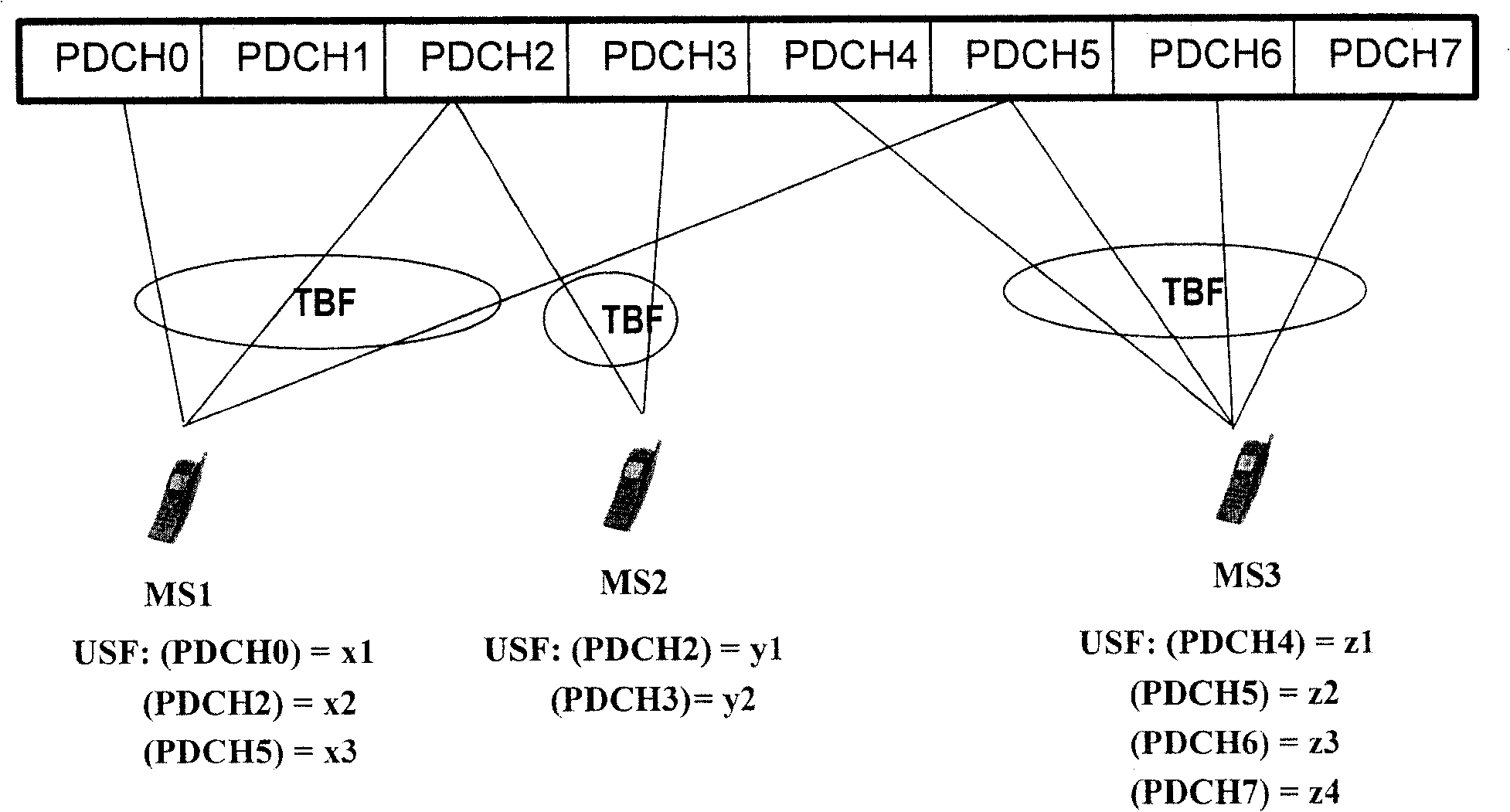Method for grouping data channel adopted by indicating terminal transmitting data
A packet data channel and terminal transmission technology, applied in wireless communication, electrical components, radio/inductive link selection and arrangement, etc., can solve problems such as indication, low utilization rate of USF, occupation, etc.
- Summary
- Abstract
- Description
- Claims
- Application Information
AI Technical Summary
Problems solved by technology
Method used
Image
Examples
Embodiment Construction
[0057] In order to make the object, technical solution and advantages of the present invention clearer, the present invention will be further described in detail by giving specific embodiments and referring to the accompanying drawings.
[0058] According to the method provided by the present invention, after the network side of the communication system allocates multiple uplink PDCHs for the terminal, if multiple USFs are set for the terminal on the downlink PDCH corresponding to one of the uplink PDCHs, the currently available USF resources for the downlink PDCH cannot be reached and allocated for the terminal. One-to-one correspondence between multiple uplink PDCHs, that is, when the number of USFs currently available for the downlink PDCH is less than the number of uplink PDCHs allocated for the terminal, different or the same USFs can be set for the terminal to correspond to several uplink PDCHs in the uplink PDCHs allocated for the terminal. That is, jumping indicates the...
PUM
 Login to View More
Login to View More Abstract
Description
Claims
Application Information
 Login to View More
Login to View More - R&D
- Intellectual Property
- Life Sciences
- Materials
- Tech Scout
- Unparalleled Data Quality
- Higher Quality Content
- 60% Fewer Hallucinations
Browse by: Latest US Patents, China's latest patents, Technical Efficacy Thesaurus, Application Domain, Technology Topic, Popular Technical Reports.
© 2025 PatSnap. All rights reserved.Legal|Privacy policy|Modern Slavery Act Transparency Statement|Sitemap|About US| Contact US: help@patsnap.com



